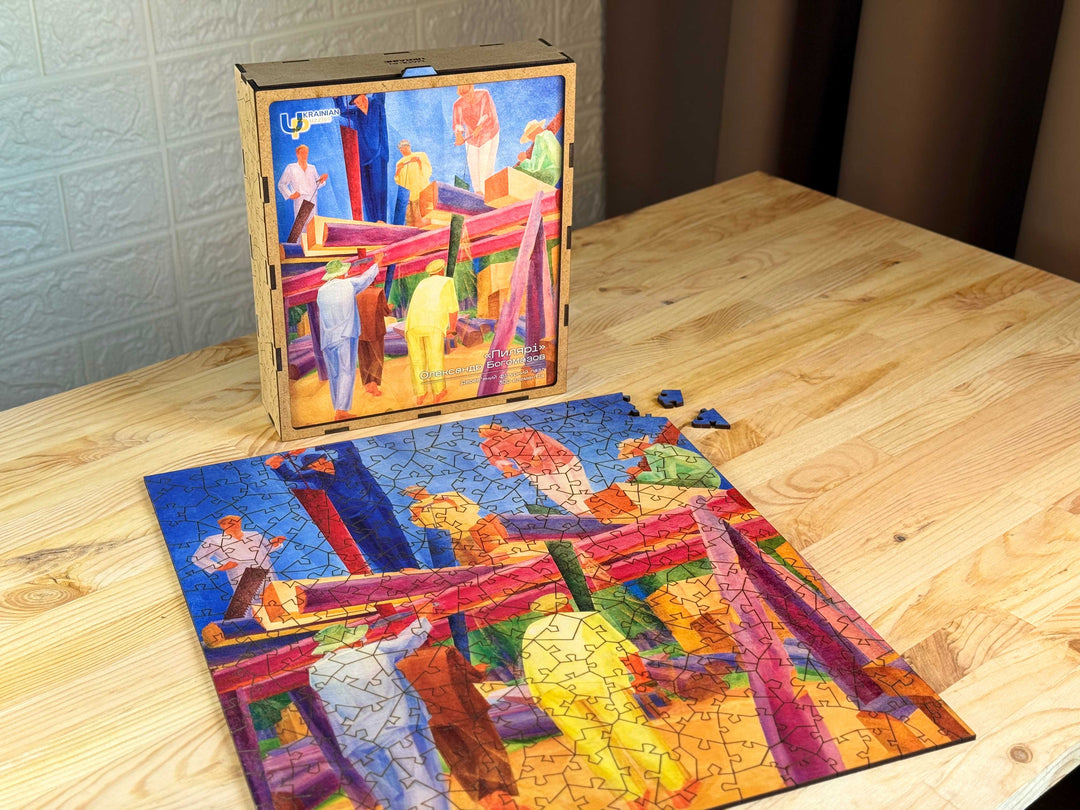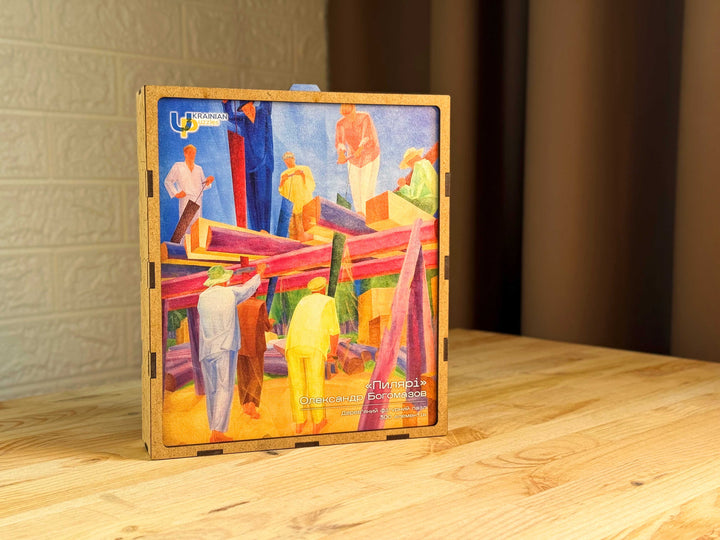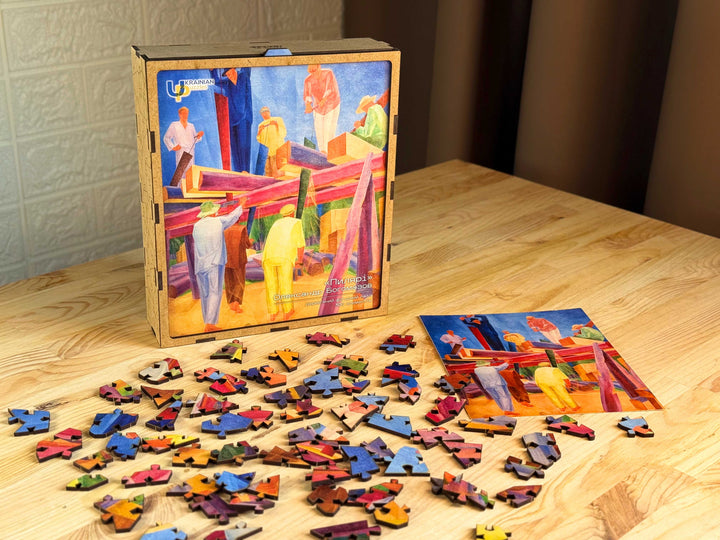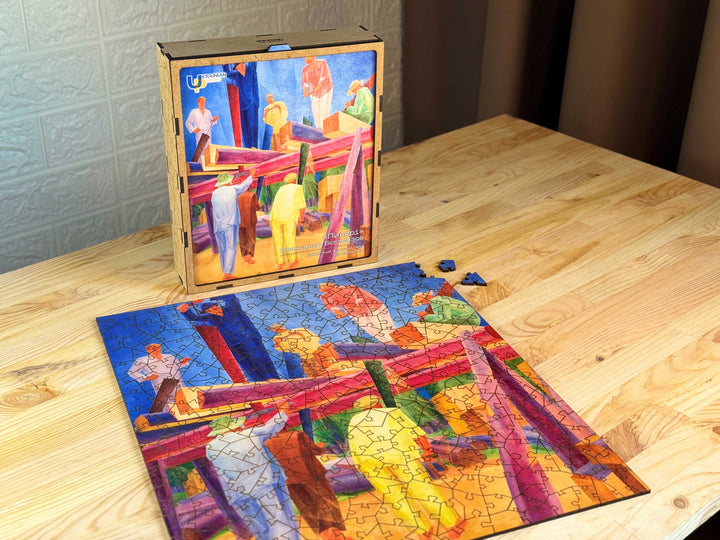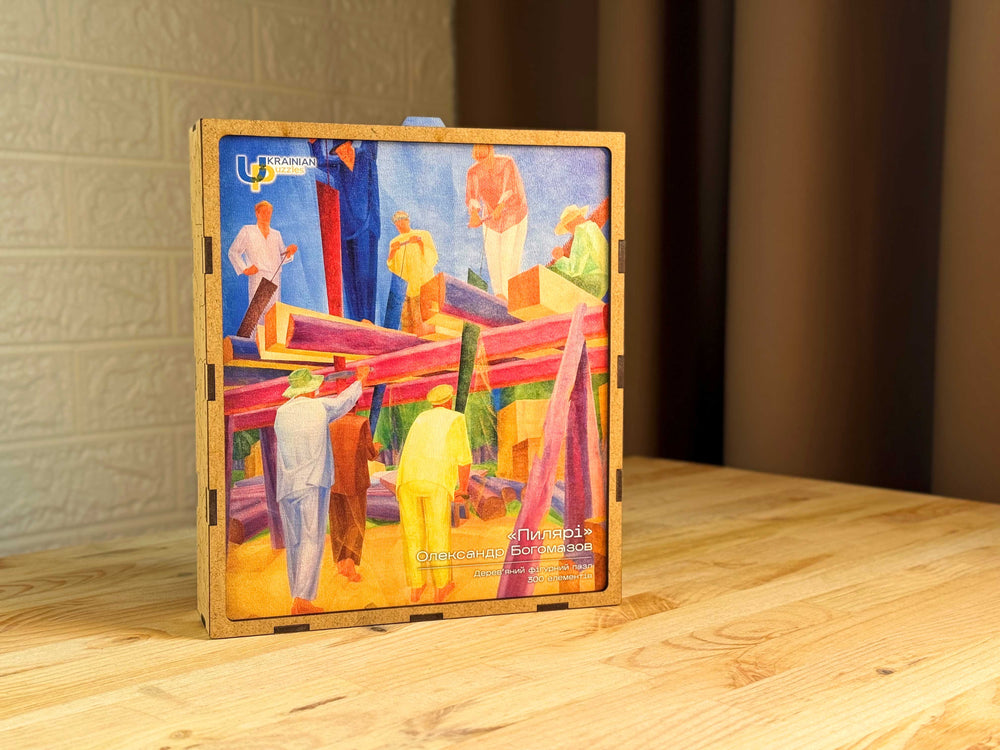Oleksandr Bohomazov (March 26, 1880 – June 3, 1930) was one of the most innovative artists of the Ukrainian and global avant-garde. He was not only an outstanding painter but also a profound art theorist whose ideas were years ahead of his time. In 1914, he wrote his fundamental theoretical treatise, "Painting and Elements," in which he laid out his own revolutionary concept: art must reflect the dynamism of modern life — movement, speed, and the energy of machines and people. Essentially, Bohomazov proposed not merely a new form or style for the 20th century, but a fundamentally new concept of painting. Oleksandr Bohomazov lived almost his entire short life in Kyiv. He was an experimenter, and his art was a constant search for a "new formula."

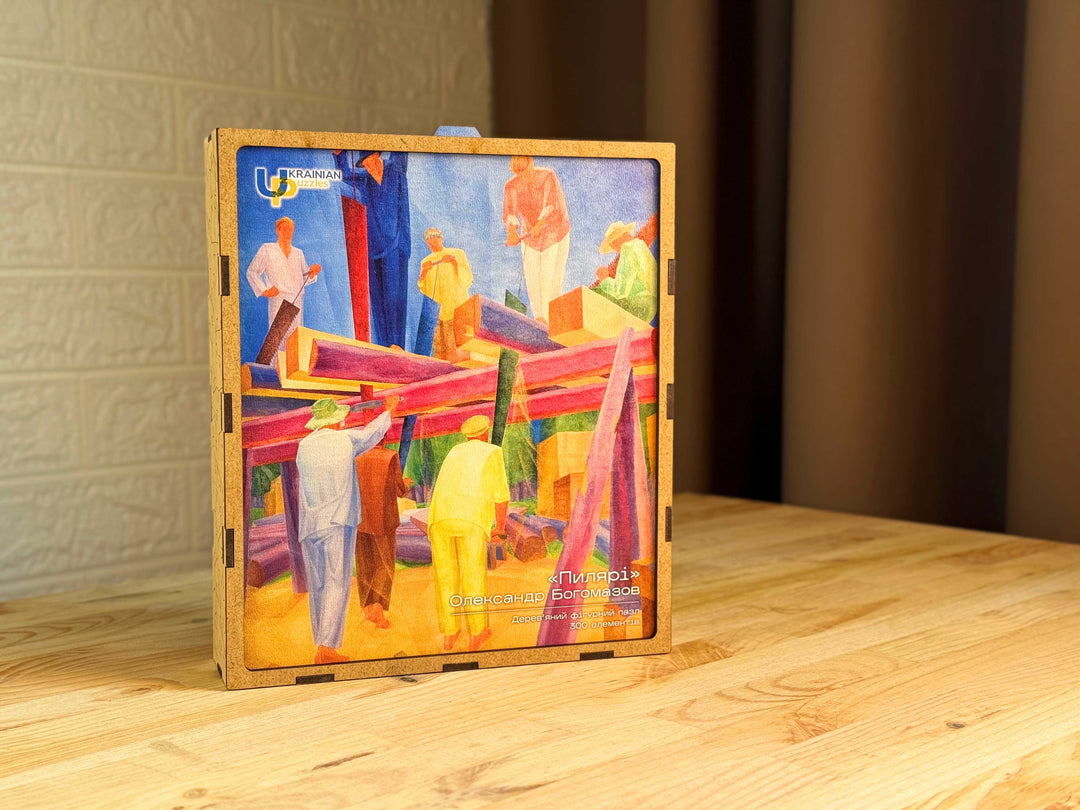
In 1927, Oleksandr Bohomazov began an extraordinarily ambitious project—the "Sawyers" triptych in iridescent colors. This work became the culmination of his creative life. In it, he embodied his main ideas and views on art, as outlined in his treatise. From the pieces of this puzzle, you can assemble one of the three paintings of the triptych, which is housed in the National Art Museum of Ukraine. Unfortunately, like most Ukrainian avant-garde artists, Bohomazov was forgotten and banned during the Soviet era; his legacy was hidden for a long time. Only at the end of the 20th century were his works rediscovered, and now the recognition of this artist's significance in the history of avant-garde art is gradually growing.







